Picto Diary - 24 April 2017 - Goa
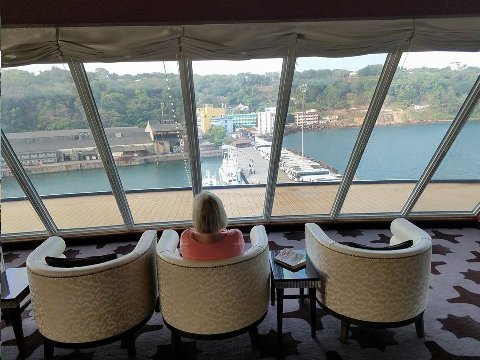
Above: TIMDT sits in observation lounge of Seven Seas Voyager. 24 April 2017. Port Vasco, Goa.
Ship had just docked. TIMDT was amazed at the number of tour busses awaiting on the pier. Today we opt out of the bus tour hoards. We hired a car, driver through TravelScope India, TIMDT's "go to" for India travel services. Hat tip: Royina,
My first visit to Goa. TIMDT's second. Channeling Vasco de Gama.
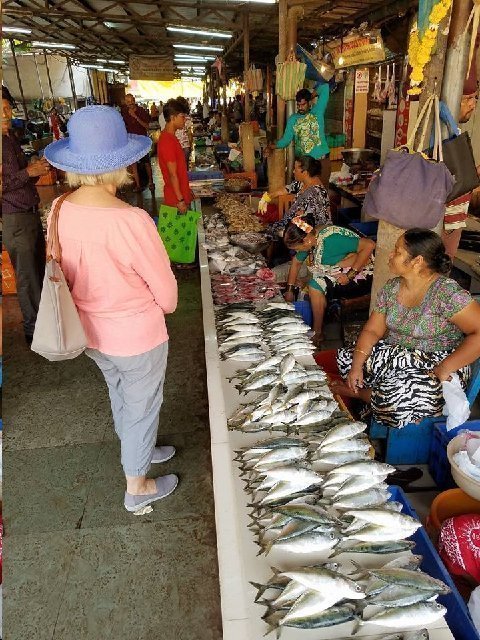
Above: TIMDT at the Panjim fish market. Panjim, Goa. 24 April 2017.
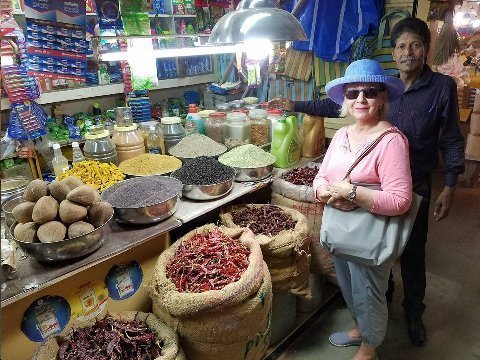
Above: TIMDT and guide Reis (excellent guide) at spice store. Pamjim Market. Panjim, Goa. 24 April 2017.
Chiles in bags at front. Reis notes that there are 1600 varieties of chilis. The seventh hottest chili grows in Goa.
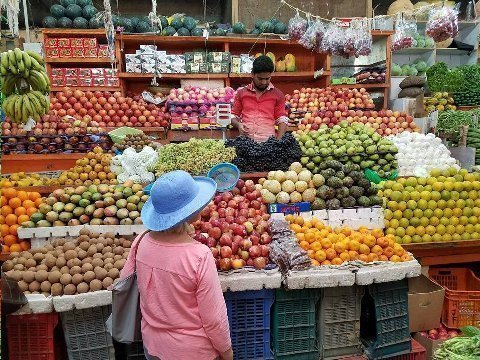
Above: TIMDT and Panjim Market. Panjim, Goa. 24 April 2017.
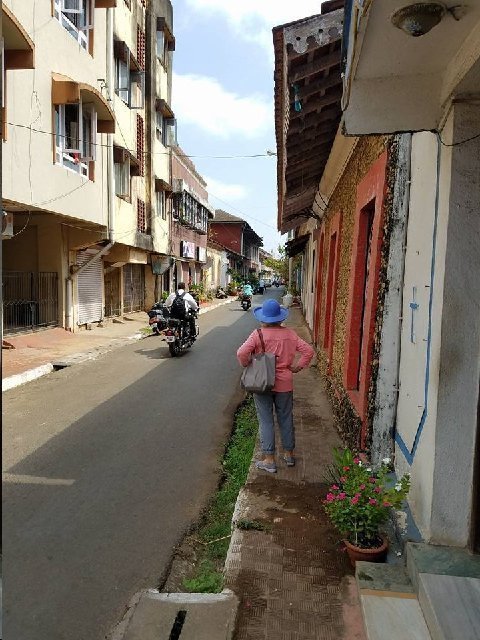
Above: TIMDT surveys a Panjim street. Panjim, Goa. 24 April 2017.
Panjim is Goa's capital. Panjim was every bit a Portuguese town until 1961, when Portugal ceded Goa to India to become and Indian state.
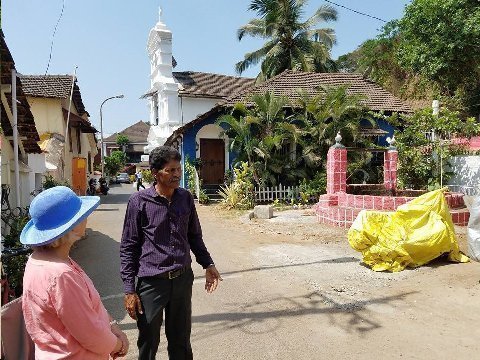
Above: TIMDT and Reis. Fontainhas, Panjim, Goa. 24 April 2017.
TIMDT and Reis survey St. Sebastian Chapel in Fontainhas, Panjim. Not also the well in the square, with roosters on the pillars. The rooster is Portugal's national bird.
Goa's first capital was Old Goa, 7 miles inland from where we stand here. The capital was moved to Panjim from Old Goa in the 1600's due to chronic plague epidemics. Before moving the capital, authorities virtually burnt Old Goa to the ground, leaving only the great cathedrals standing. They didn't want to offend God. Still, the plague persisted, forcing the ultimate move to Panjim.
Reis is a native of Goa and is of Portuguese descent. The Portuguese and the British got along well before India's independence in 1947. Goans moved freely from Goa to British India to obtain employment.
Post independence, the Government of India closed the border to Goa preventing native Goans from pursuing employment in India. Native Goans, for economic reasons, were forced to turn against their Portuguese rulers, who had no solution for their economic woes.
In the face of rising protest from native Goans, Portugal ceded is colonial possession to India in 1961.
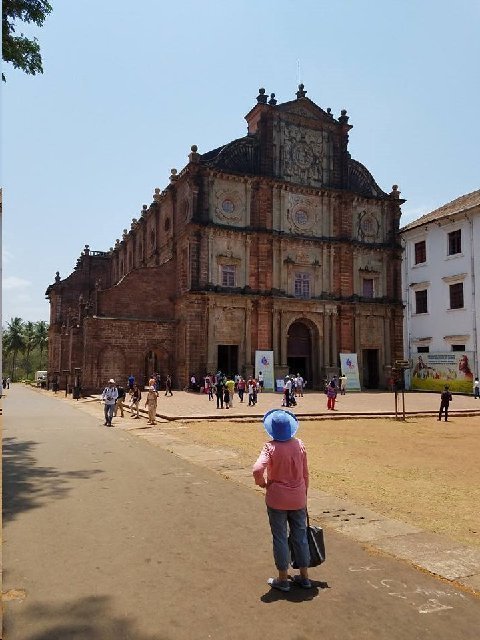
Above: TIMDT observes Basilica of Bom Jesus. Old Goa. 24 April 2017.
The remains of St. Francis of Xavier are preserved in this cathedral. St. Francis' remains are moved to the adjacent Cathedral of Se every ten years to be made visible to millions of Catholics from around the world who make the pilgrimage to Goa.
St. Francis of Xavier was a colleague of Ignatius of Loyola in Paris. Together, they founded the Society of Jesus, the Jesuits.
India today has 25 million Christians. Most are devout. France has 70 million nominal Catholics. Virtually none are devout. In that sense, one could conclude that India is a stronger Christian nation than France.
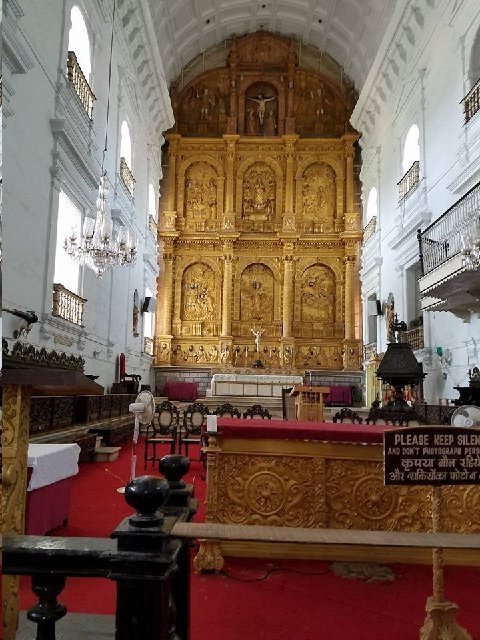
Above: Altar. Cathedral Bom Jesus. Old Goa. 24 April 2017.
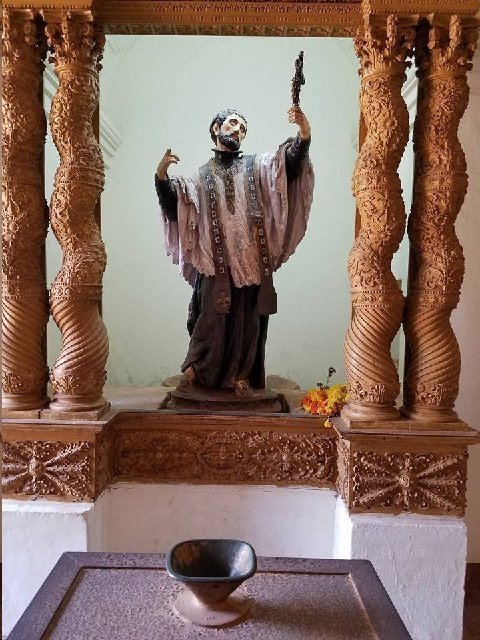
Above: St. Francis of Xavier sculpture. Cathedral Bom Jesus. Old Goa. 24 April 2017.

Above: TIMDT at Cathedral of Se. Old Goa. 24 April 2017.
Largest cathedral in Asia. The cathedral celebrates St. Catherine, Christian martyr from Egypt. St. Catherine was beheaded by Emperor Maximillian around 305 AD in Alexandria.
St. Catherine's monastery in Sanai, Egypt, marks the spot where Maximillian is said to have rolled St. Catherine's head down the mountain only to have it miraculously saved from destruction by divine intervention. This story is depicted on cathedral alter panels.
Seeing these cathedrals (Bom Jesus and Se) creates a sense of deep awe for me. This is India! We're supposed to think of India in terms of its great Hindu temples (Kajuraho, Kanchipuram, Madurai), its incredible Moghul monuments (Taj Mahal, Red Fort), and Maharajah palaces (Jaipur, Udaipur, Jodhpur). The Jain monuments at Ranakpur and Moodabidri seem quite at home in India. Mumbai's Parsi (Zoroastrian) Towers of Silence, the Sikh Golden Temple at Amritsar and Jama Masjid Mosque in Delhi, are wholly consistent with what one thinks of as spiritual, exotic India.
But, Catholic Cathedrals? Spiritual maybe. But, not so exotic. Somehow these great cathedrals (Se and Bom Jesus) seem anachronistic. In India, westerners were interlopers and overseers until they left, voluntarily in the mid 20th century.
Yet, the cathedrals strongly affirm the reality of how Western Culture and Christianity penetrated deeply in to Asia. While Christians today represent only 2% of India's population that's 2% of a billion people, or 20 million. And, it is important to note that India's Christian population is for the most part devout and church going. Christianity is vibrant in India.
I've long wanted to visit Goa. I'm thrilled that I'm here today. Today its Goa's beaches and the relaxed lifestyle that draw a lot of visitors. We bypassed the beaches in our long day here. I wanted to get a flavor for the culture... of how Western Culture meshed with India. Seeing these Cathedrals and the ongoing vibrancy of Christianity in India reaffirmed how unparalleled is India's complexity and diversity.

Above: TIMDT looking at jewelry. Old Goa. 24 April 2017.
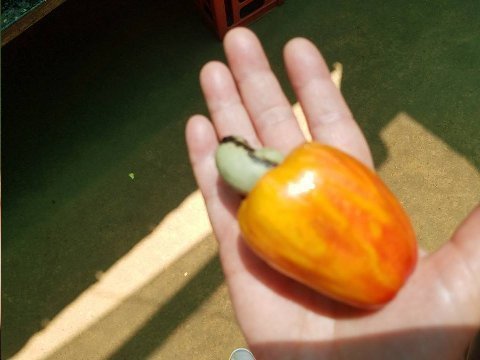
Above: Cashew fruit and nut. Tropical Spice Plantation, Ponda, Goa. 24 April 2017.
The cashew nut is on top, but the cashew fruit is also put to use... to make cashew feni, a 40% alcohol aperitif, Goa's most popular alcoholic drink. Feni is produced exclusively in goa. According to our guide Reis, few Goans use drugs, so much do they drink cashew feni as a substitute.
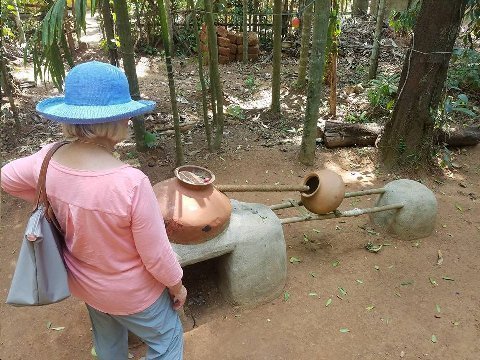
Above: TIMDT observes feni distillation process. Tropical Spice Plantation. Ponda, Goa. 24 April 2017.
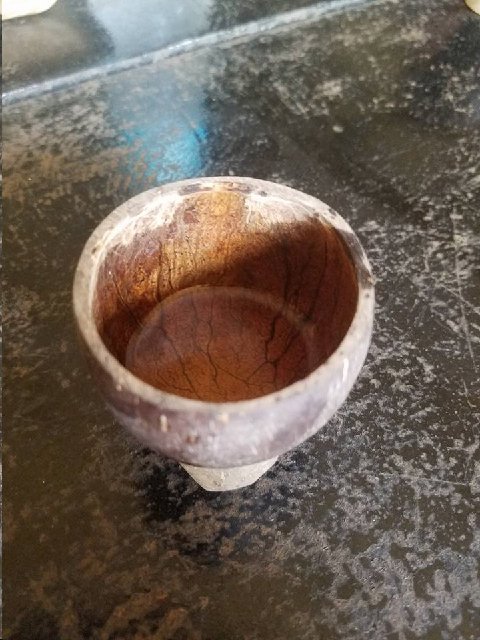
Above: Cup of feni... for the tasting. Tropical Spice Plantation. Ponda, Goa. 24 April 2017.
Europe's quest for spice triggered growth in capital and wealth, which in turn spurred the Renaissance and the industrial revolution. Following are images of selected spices... what the fuss was all about:
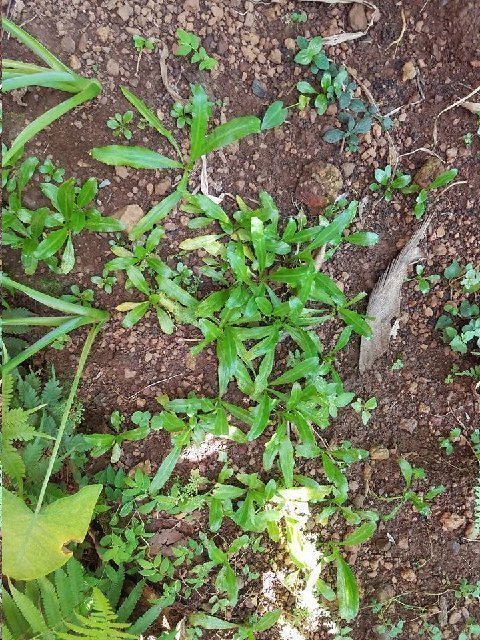
Above: Coriander. Tropical Spice Plantation. Ponda, Goa. 24 April 2017.

Above: Black Pepper. Tropical Spice Plantation. Ponda, Goa. 24 April 2017.
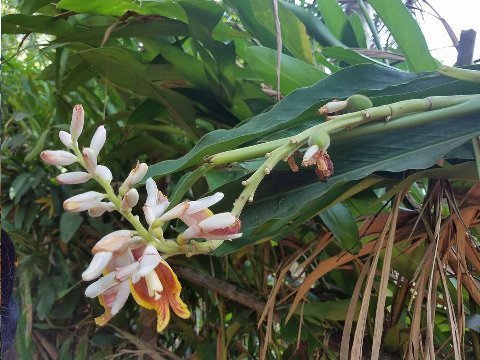
Above: Black cardamom flower. Tropical Spice Plantation. Ponda, Goa. 24 April 2017.
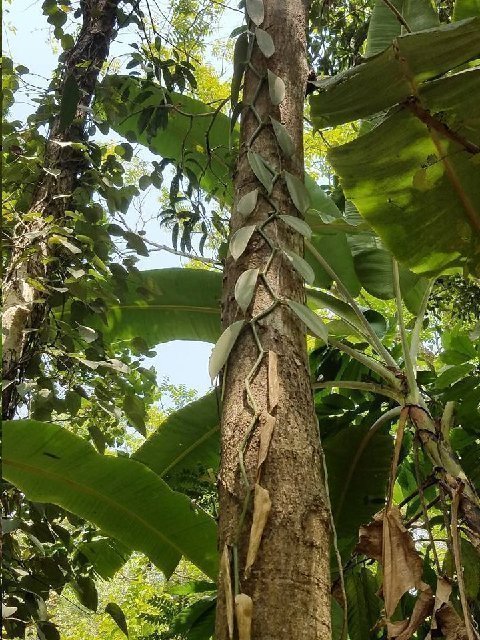
Above: Vanilla. Tropical Spice Plantation. Ponda, Goa. 24 April 2017.
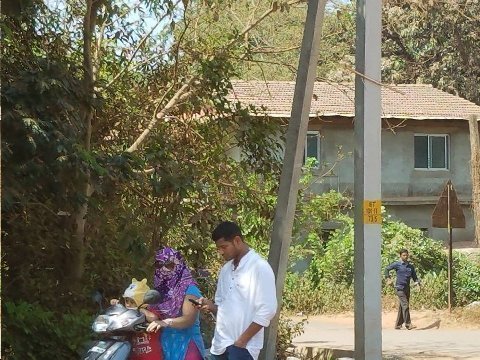
Above: "Veiled" non Muslim woman. Old Goa, 24 April 2017.
Yesterday. Earlier walking through the Panjim market we saw two girls, wearing jeans, bare shoulder tops, AND full face covering hijabs. Surprised, I asked guide Reis, if Muslim girls in Goa had lowered their standards by baring their shoulders. . "Oh, those are not Muslim girls," said Reis, "Christian and Hindu girls in Goa commonly wear hijabs as a fashion statement. They want to protect their skin from the sun, or not be noticed by others.
I was struck by the parallel of the Goan girls' dress and the trend towards veils in the west. Paris designers are on to the trend as are the Women's Marchers. Women's March leader, Linda Sarsour, sets the example for more modest female habiliment.
Addendum:
The very exotic "Jack Fruit" Margaret was looking at is growing in our back yard here in Miami. Our tree produces so many fruits and they are huge and heavy. The only problem is that when ripe, they smell like cat urine...but, the fruit is delicious and plentiful.
Magnolia,
Miami, FL
Very interesting e mails. Thank you.
El Contador,
Tavistok, UK